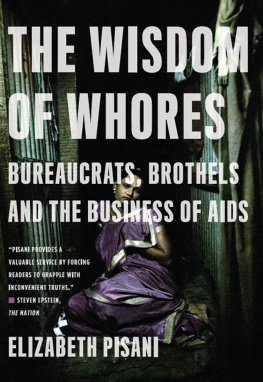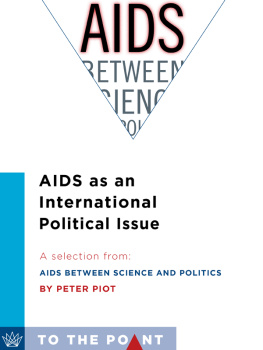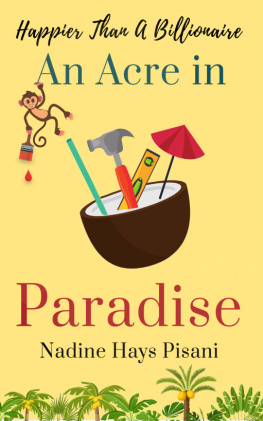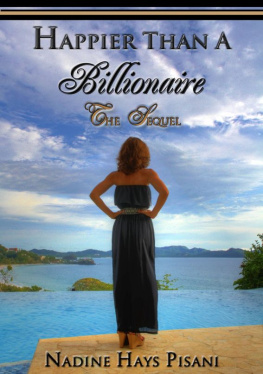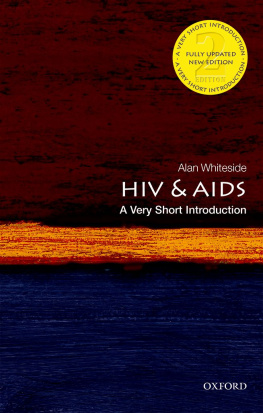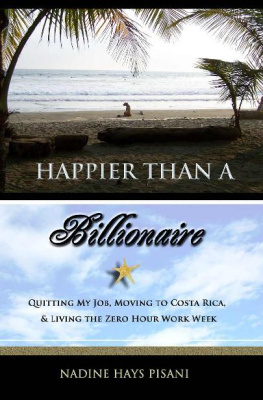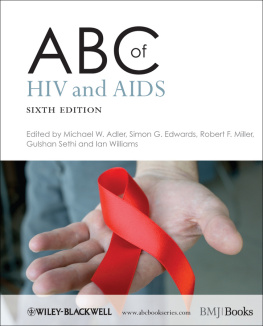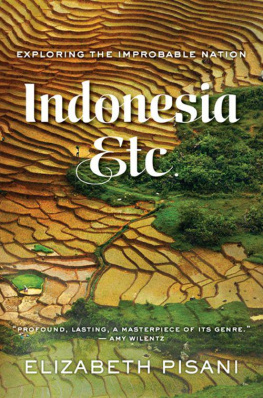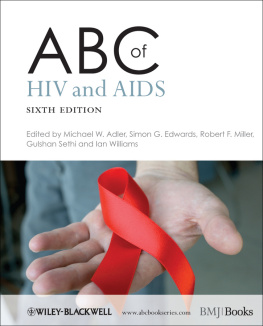Elizabeth Pisani has asserted her moral right under the Copyright, Designs and Patents Act, 1988, to be identified as the author of this work.
All rights reserved. No reproduction, copy or transmission of this publication may be made without written permission.
No paragraph of this publication may be reproduced, copied or transmitted save with written permission or in accordance with the provisions of the Copyright Act 1956 (as amended).
Any person who does any unauthorized act in relation to this publication may be liable to criminal prosecution and civil claims for damages.
A CIP catalogue record for this book is available from the British Library.
AUTHORS NOTE
This is a non-fiction book. The events and facts in it are recorded as faithfully as my memory and written and electronic records allow. Most people appear under their real names, or the names by which they introduced themselves to me. Sometimes this is a first name only (indeed many people in Indonesia only use one name).
Except where someone was speaking or writing on the public record, I have tried to seek peoples permission to recount conversations we have held, or to reproduce their e-mails or written comments. In the few cases where I have not been able to trace people, I have generally changed their names.
Most of the documents referred to in the book, including the scientific references, can be accessed using the links provided on the books website:
http://www.wisdomofwhores.com/references
The website also has illustrations, photos and my blog on topics that may be of interest to readers of this book. Comments are welcomed.
Elizabeth Pisani
London, November 2007
ACKNOWLEDGEMENTS
The Wisdom of Whores is the product of over a decade of debate, passionate disagreement, moments of enlightenment, misery and laughter shared with people in many countries and from many walks of life. Some I am not able to acknowledge by name, and some whose names I do mention will be uncomfortable with many of the ideas expressed in the book. I thank them nonetheless for contributing to my understanding and convictions.
My greatest debt of gratitude is to friends and colleagues in Indonesiapeople who led me through brothels and bureaucracies with patience and good humour. They include Arizal Ahnaf, Ines Angela, Vidia Darmawi, Desi, Eris, Mohammad Noor Farid, Frankie, Molly Gingerich, Happy Hardjo, Naning Iswandono, Saiful Jazan, Balgis Koesnantah, Ratna Kurniawati, Lina, Ling Ling, Nana, Nancy, Palani Narayanan, Kharisma Nugroho, Brad Otto, Joy Pollock, Sigit Prihutomo, Chris Purdy, Haikin Rachmat, Resty, Made Setiawan, Fonny Silfanus, Arwati Soepanto, Stephen, Lenny Sugiharto, Aang Sutrisna, Bhimanto Suwastoyo, Wayne Wiebel and Dewa Wirawan. I learned much, too, from other colleagues at the Indonesian Ministry of Healths sub-Directorate of HIV/AIDS and at Statistics Indonesia, as well as at Family Health Internationals Indonesian programme, ASA. Thanks are especially due to Steve Wignall who led ASA with dedication, compassion and a healthy dose of ribald realism.
Besides making me laugh, Philippe Girault taught me a lot about the vagaries of fieldwork; Elizabeth Donegan did too. The unflappable Hari Purnomo was my guru for conflict resolution, and Penny Miller provided a shining example of the importance of persistence and attention to detail in turning good ideas into good programmes.
In Beijing, I was lucky to work with the epidemiology division of the National Centre for HIV/AIDS/STD Control. Thanks to Lu Fan and his staff, especially Chaganhuar and Wang Liyan who were always willing to burn the midnight oil in the name of research. Im also grateful to Cheng Feng, He Jinglin, Bert Hoffman, Liu Qian, Meiling, Joel Rehnstrom, Wang Lixue, Wu Zunyou and Zhong Li.
Some say it is more important to choose a good boss than to choose a good job; I have been lucky to have both. Jeanine Bardon ran FHI in Asia with an unbeatable mixture of good humour and steely determination to build programmes that actually improve lives. She ran an organization stuffed with wonderful people who taught me many things. Thanks to all of them, especially Sara Hersey, Nancy Jamieson, Nigoon Jitthai, Mike Merrigan, Graham Neilsen, Dimitri Prybylski, Boyet Roquero and Ganrawi Winnithana. Steve Mills and Tobi Saidel were my first friends at FHI; they taught me about behavioural surveillance and pulled me into the fold, and for that as well as good friendship I thank them.
Ive had many good bosses in my wanderings as a consultant: Ties Boerma, Txema Calleja, Michel Carael, Peter Ghys, Rob Moodie and Bernhard Schwartlander have all indulged my argumentative nature and defended my plain prose against UN-creep. Other friends and colleagues in the AIDS mafia include Andrew Ball, Chris Castle, Kevin De Cock, Don Des Jarlais, Isabelle de Vincenzi, Geoff Garnett, Robin Gorna, Simon Gregson, Daniel Halperin, Noerine Kaleeba, John Novak, Wiwat Peeratapanapokin, Cyril Pervilhac, Deborah Rugg, Swarup Sarkar, Karen Stanecki, John Stover, Jim Todd, David Wilson, Ray Yip and Basia Zaba. I have argued stubbornly with most of these people over the years, and with some I still disagree on many points, but I have always come off the wiser from our encounters. Id especially like to thank Tim Brown, who shares my brain, and Neff Walker, who simply makes the AIDS field a more fun place to work.
It goes without saying that I thank everyone who appears in the book for letting me tell their tales. First among equals is David Fox, who has been in equal parts generous and courageous in allowing me to chronicle an unhappy episode in our largely happy history.
Several people were kind enough to read and provide detailed comments on drafts of all or parts of the book. Thanks to Chris Archibald, Peter Baldwin, Andrew Ball, Jeanine Bardon, Julie Bates, Claire Berlinski, Karen Broughton, Sophie Campbell, Michel Carael, Adrian Cox, Tim France, David Gordon, Robin Gorna, John McGlynn, Jack Molyneaux, Palani Narayanan, Mead Over, Sophie Pinwill, Gray Sattler, Nathalie Steiwer, Jonathan Swire, Robert Templer and Jack Tenison. Sinead Worrall brought a whole new perspective to the book. Keith Hansen spent untold hours pointing out logical fallacies, highlighting clichs and suggesting improvements in content and structure. He managed to do all of that while still being a fount of energizing encouragement. Jimmy Whitworth has entrenched his position as the epidemiologist I most admire by taking the time to read and comment thoughtfully and amusingly on every chapter of this book. For that and for a decade of inspiration, many thanks. Chris Green gets my vote for worlds best activist. Through careful readings and forthright comments Chris has tried to keep me both honest and human. I apologize if I continue to fail on either front. I can only say that the book has been vastly improved by the contribution of all of these readers.
Ive been as lucky as it is possible to be as an author. The rather improbable idea of trying to sell an engaging book about a fatal disease was enthusiastically swept up by Felicity Bryan. I am indebted to Daphne Park for introducing us, and to Felicity, George Lucas, Andrew Nurnberg and their teams for matchmaking me with such wonderful publishers. Sara Holloway at Granta and Alane Mason at W. W. Norton prodded me kindly but pointedly in directions that made the book better; they have been a pleasure to work with. David Graham, Brigid MacLeod, Pru Rowlandson and Alex Cuadros have also provided good ideas and encouragement.

